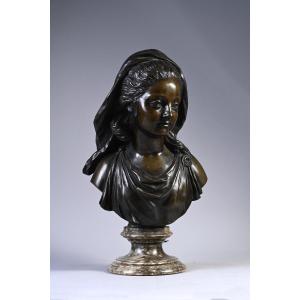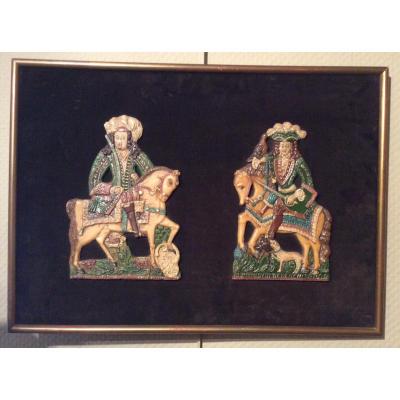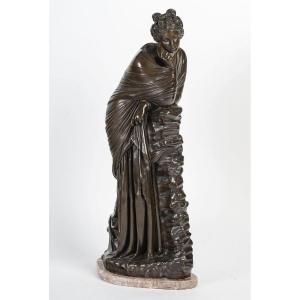Plaster
L. 66 x W. 30 x H. 25 cm
Missing leg end
Lacquered gum plaster intended for the production of matrices which were later used to produce plaster for the trade
The dark colour indicates maximum use.
Probably from the moulding workshops of the Musée du Louvre
This model is based on an 1847 marble which, along with ‘The Romans of Decadence’ by Thomas Couture, was the most talked-about work at the 1847 Salon, causing a double scandal, both artistic and social. For this suggestive image of a naked woman writhing under the bite of a symbolic snake wrapped around her wrist, Clésinger, as evidenced by the cellulite at the top of her thighs and transcribed in the marble, had used a life-size cast of the body of a demi-mondaine, Apollonie Sabatier (1822-1890). Baudelaire's muse, a Parisian beauty who ran a salon, the woman her friends called ‘the President’ offered Clésinger an unexpected success.
The direct use of life casts for sculpture was fiercely contested in the 19th century, on the grounds that the artist's workmanship and probity were lacking. Clésinger carefully maintained excellent relations with Théophile Gautier, who orchestrated the scandal. For Delacroix, it was no more than a ‘daguerreotype in sculpture’. Yet the generous forms, whose realism shocked the prudishness of the Salon public, are combined with more conventional elements: the less expressive idealised face, the base covered with flowers like a bronze clock, making Woman Stung by a Snake the perfect example of eclecticism in sculpture. As for the motif of the abandoned body, it was widely used until the end of the century, as can be seen in Schoenewerk's sculpture Jeune Tarentine, 1871.


































 Le Magazine de PROANTIC
Le Magazine de PROANTIC TRÉSORS Magazine
TRÉSORS Magazine Rivista Artiquariato
Rivista Artiquariato